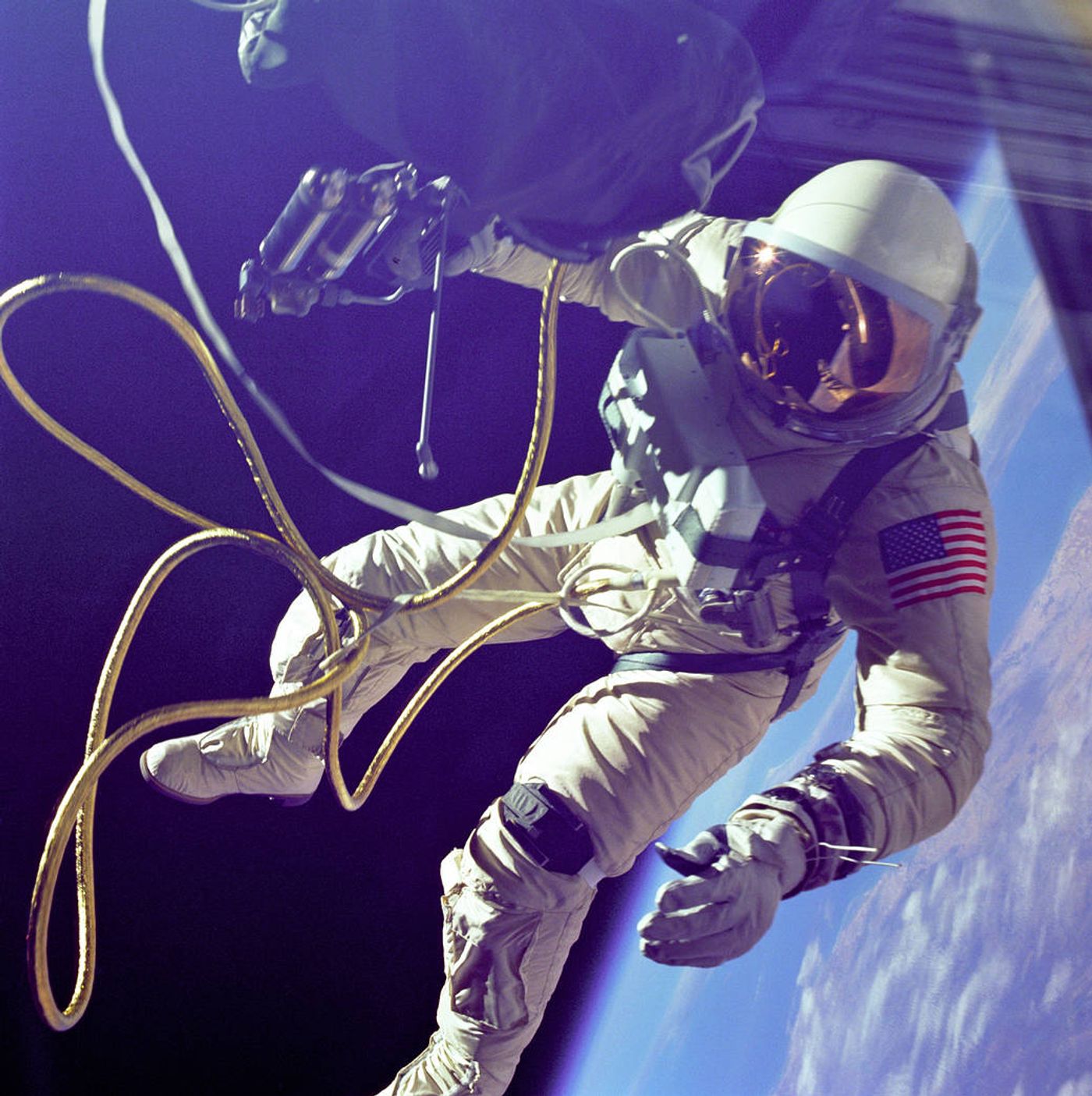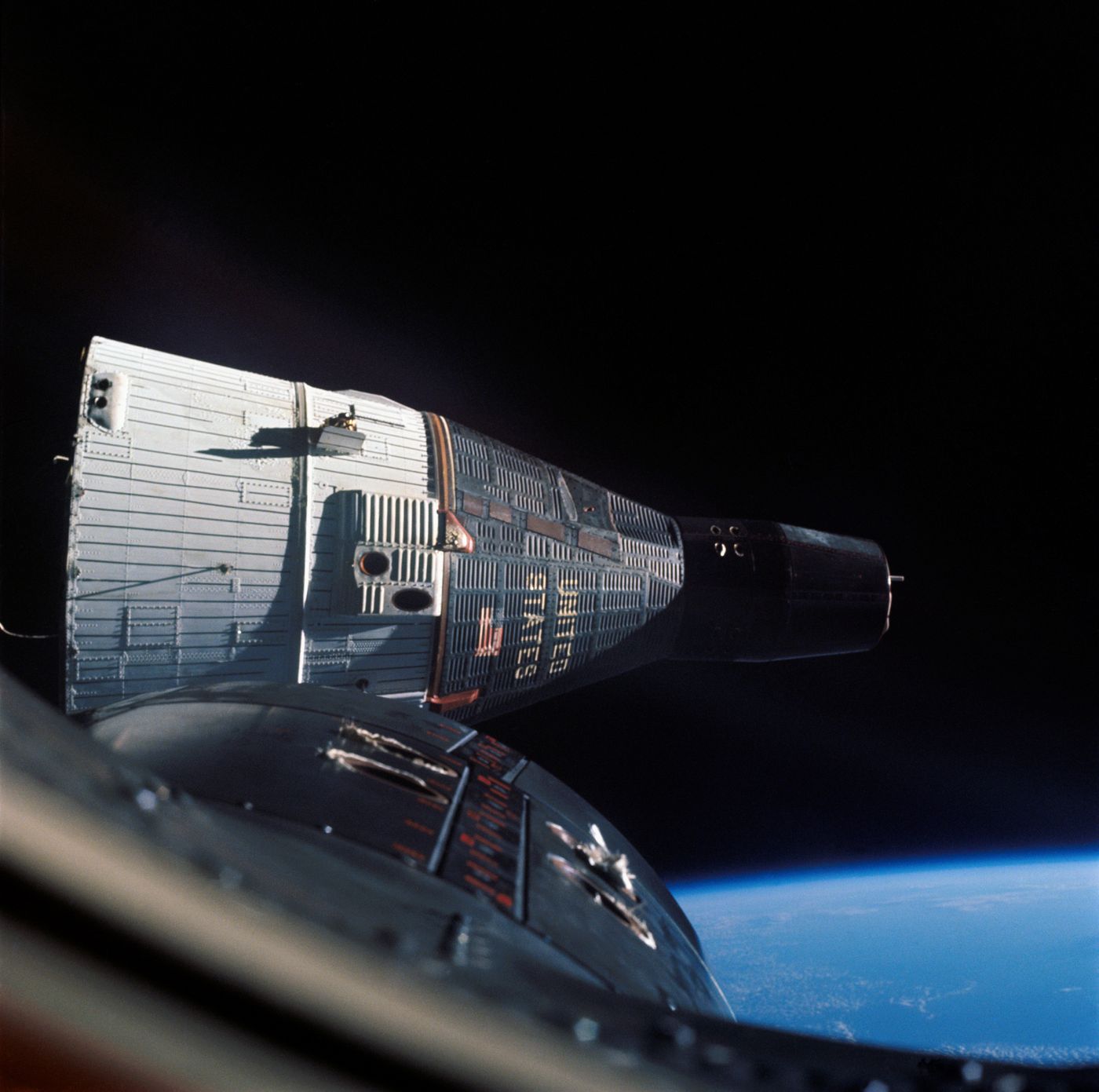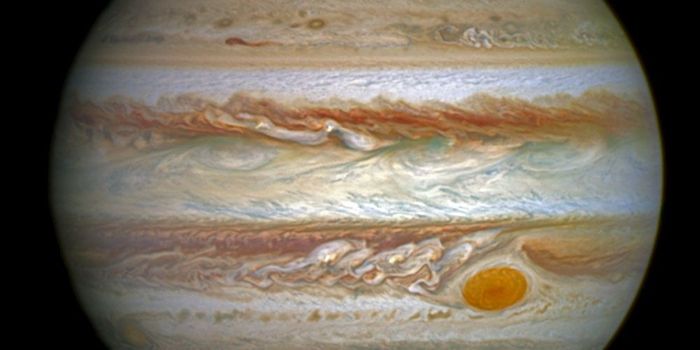Looking Back in Space: NASA's Project Gemini
This series will explore historic space missions from the start of the Space Age to the present day, including both crewed and robotic missions. Here we will investigate the scientific rationale behind each mission and, most importantly, what we learned from these early missions and how they helped shape future missions that will launch to the Moon and Mars within the coming years.
With the success of Project Mercury, NASA needed a bridge between Mercury and Apollo to continue to teach us about how humans work and live in outer space while testing new technology. Thus, Gemini was born.
NASA’s Project Gemini consisted of a two-person capsule and functioned from 1965 to 1966, featuring 19 total launches, which consisted of 2 initial uncrewed test missions, 10 crewed missions, and 7 target vehicles designed to practice docking maneuvers in space. Once NASA decided to go with lunar orbit docking for Apollo, the purpose of Gemini was to practice these maneuvers in Earth orbit. During its duration, Project Gemini accomplished several firsts for American human spaceflight, to include the first week-long flight, first extravehicular activity (EVA), first use of fuel cells, first docking with another space vehicle, and even the first musical instruments played in space.
The first two missions of Project Gemini were Gemini 1 and Gemini 2, which both consisted of uncrewed vehicles meant to test the various spacecraft systems and subsystems from launch to recovery. While Gemini 1 was intentionally destroyed during reentry, Gemini 2 successfully tested the spacecraft’s heat shield on a suborbital flight.
The first crewed flight of Project Gemini was Gemini 3, which launched astronauts Virgil “Gus” Grissom and John Young into space for three orbits and almost five hours before splashing down in the Atlantic Ocean. The primary goal of this first crewed mission was to demonstrate the crewed qualifications of the spacecraft, to include the various navigation and reentry subsystems.
Gemini 4 launched astronauts James McDivitt and Edward White on a 4-day, 62-orbit flight into space culminating in the first American spacewalk, which lasted 22 minutes and was performed by White. The overall objective of the mission was to continue to test the various spacecraft systems and subsystems, along with flight planning for extended stays in space, with the crew plashing down in the Atlantic upon re-entry.
The first week-long spaceflight came in Gemini 5, which saw astronauts Gordon Cooper and Charles “Pete” Conrad spend almost eight days in space. The primary goals of the mission were to test the rendezvous maneuver subsystems and demonstrate a long-duration crewed flight while seeing the long-duration effects of weightlessness on the crew. This mission marked the first use of first cells for electrical power, and the crew conducted 17 experiments before splashing down in the Atlantic Ocean.
Since the overall purpose of Project Gemini was to practice docking maneuvers with another spacecraft, NASA utilized the uncrewed Agena Target Vehicle (ATV), but when that launch failed then Gemini 6 was officially scrubbed and later renamed Gemini 6A, and was actually launched after Gemini 7. The primary goal of this dual-spacecraft mission was to test rendezvous maneuvers, which it achieved by approaching each other from 1 to 300 feet. Gemini 6A was crewed by astronauts Walter Schirra and Thomas Stafford and was in space for just over one day, while Gemini 7 was crewed by astronauts Frank Borman and Jim Lovell and their respective mission lasted for almost 14 days. The primary objective of Gemini 7 was to observe whether humans could live and work in space for 14 days.
The first successful docking with another spacecraft happened during Gemini 8, when astronauts Neil Armstrong and David Scott docked with the ATV. However, this mission also had the first real space emergency when one of the thrusters became stuck open causing the mated spacecrafts to tumble violently, which was made worse even after Armstrong has disengaged from the ATV. In the end, Armstrong was able to bring the spacecraft under control using all 16 reentry control system (RCS) thrusters. Unfortunately, because they ended up using 75% of the RCS, they were ordered to come home and splashed down in the Pacific Ocean after only 10 hours in space. This mission demonstrated Armstrong’s capability in thinking quickly while staying calm, which demonstrated one of the many reasons he was the first person to walk on the Moon.
Much like with Gemini 6, the Gemini 9 mission was scrubbed due to a failed launch of the Augmented Target Docking Adapter (ATDA) and was later renamed Gemini 9A, which launched astronauts Tom Stafford and Gene Cernan into space to dock with a re-launched ATDA. However, the ATDA shroud failed to completely open, preventing docking from happening. Once the crew was in orbit and confirmed the shroud failure up-close, their mission plan was changed to perform passive rendezvous maneuvers. Their missions lasted a total of 3 days with the crew splashing down in the Atlantic Ocean.
Gemini 10 saw astronauts John Young and Michael Collins dock with its ATV while also performing rendezvous maneuvers with Gemini 8’s ATV, as well. During the mission, the crew also performed 15 scientific, technological, and medical experiments throughout their almost 3 days in space before splashing down in the Atlantic Ocean.
Gemini 11 saw astronauts Charles “Pete” Conrad and Richard Gordon successfully perform a first orbit rendezvous and docking with an ATV and demonstrating automation reentry. During the almost 3-day mission, the crew also performed eight scientific and four technological experiments, ultimately down in the Atlantic Ocean.
The final mission of Project Gemini was Gemini 12, which saw astronauts Jim Lovell and Edwin “Buzz” Aldrin launch into space for almost 4 days. The primary objective of the mission was to rendezvous and dock with an ATV, which had to be done manually due to radar malfunctions. During the mission, Aldrin performed the longest EVA at 5 hours and 30 minutes, while demonstrating solutions to previous EVA issues. The crew splashed down in the Atlantic Ocean after 59 orbits of the Earth.
Project Gemini accomplished a number of firsts for American spaceflight, which not only helped set the stage for the Apollo missions, but for the upcoming Artemis missions, as well.
Sources: Labroots, NASA, NASA (2), NASA (3), NASA (4), NASA (5), NASA (6), NASA (7), NASA (8), NASA (9), NASA (10), NASA (11), NASA (12), NASA (13)
As always, keep doing science & keep looking up!











